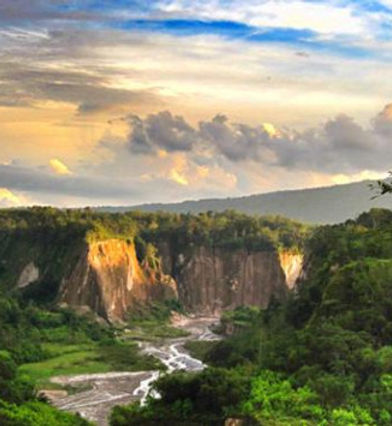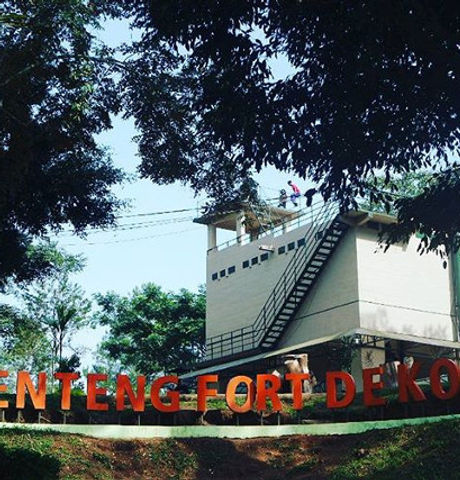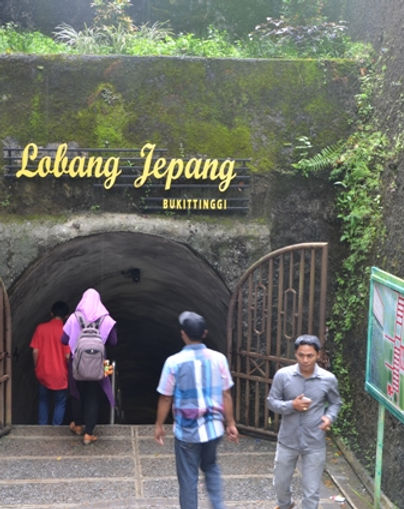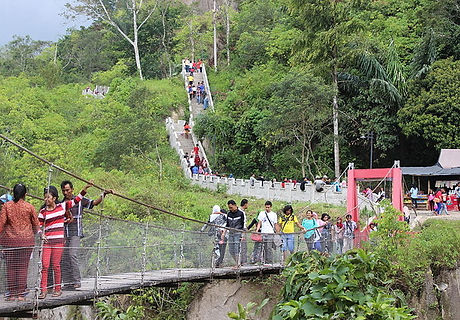Bukittinggi Tourism
The city of Bukittinggi (Minang language: Bukiktinggi, Jawi, بوكيق تيڠڬي) is the second largest city in the province of West Sumatra, Indonesia. The city was once the capital of Indonesia during the Emergency Government of the Republic of Indonesia. The city has also been the capital of the Province of Sumatra and Central Sumatra Province. This city in the Dutch colonial era called Fort de Kock and earned the nickname as Parijs van Sumatra. Bukittinggi is known as the nation's struggle city and is the birthplace of some of the founding figures of the Republic of Indonesia, among them Mohammad Hatta and Assaat who are both proclaimers and officials of the President of the Republic of Indonesia.

Jam Gadang
Jam Gadang is the name for the clock tower located in downtown Bukittinggi, West Sumatra, Indonesia. This clock tower has a clock with a large size on four sides so called Jam Gadang, Minangkabau terminology meaning "big clock". In addition to being a central marker of Bukittinggi, Jam Gadang has also been used as a tourist attraction with the expansion of the park around the clock tower. The park became a community interaction space both on weekdays and on holidays. Common events are usually held around the park near the clock tower.

Ngarai Sianok
Sianok canyon is a steep valley (canyon) located on the border of Bukittinggi city, in District IV Koto, Agam regency, West Sumatra. The valley extends and curves as the city line from the southern Koto Gadang canyon to the Sianok Anam Suku village, and ends in the sub-district of Palupuh. Sianok canyon has a very beautiful scenery and also become one of the mainstay tourist attractions of the province. The canyon Sianok, which is about 100 m deep, stretches along 15 km wide by about 200 m, and is part of the fault that separates the island of Sumatra into two longitudinal parts (Semangko fault).

Benteng Fort De Kock
The fort was founded by Captain Bouer in 1825 during Baron Hendrik Merkus de Kock's time as commander of Der Troepen and the Deputy Governor General of the Dutch East Indies, which is why this fort is famous as Fort De Kock. The fortress which is situated on top of Jirek Hill is used by the Dutch Army as a stronghold of the Minangkabau people since the outbreak of the Padri War in 1821-1837. In the vicinity of the castle there are still ancient cannons of the 19th century period. In the following years, around this fortress grows a city which is also named Fort de Kock, now Bukittinggi.

Lobang Jepang
Bukittinggi Japanese hole (also spelled the Japanese hole) is one of the historical attractions in Bukittinggi City, West Sumatra. Is a tunnel (bunker) protection that built the Japanese occupation army around 1942 for the sake of defense. The Japanese hole was built as a store of Japanese army supplies and equipment, with a tunnel length of 1400 m and winding and has a width of about 2 meters. A number of special rooms are located in this tunnel, among them is a reconnaissance space, ambush room, prison, and armory. In addition to its strategic location in the city that was once the central government of Central Sumatra, the land that became the wall of this tunnel is a type of soil that if mixed with water will be stronger. Even the earthquake that rocked West Sumatra in 2009 and then not much damage the structure of the tunnel.

Museum Bung Hatta
One attempt to commemorate one of the Proclaimers of Indonesian Independence is to perpetuate his life and livelihood. This effort is done in the form of bringing back the atmosphere of his past life by rebuilding the home of Bung Hatta. With a visit to this place, you can see that the Bung Hatta family is a respected, simple and kind family.

And Many More
I will take you as many places you want to go.

